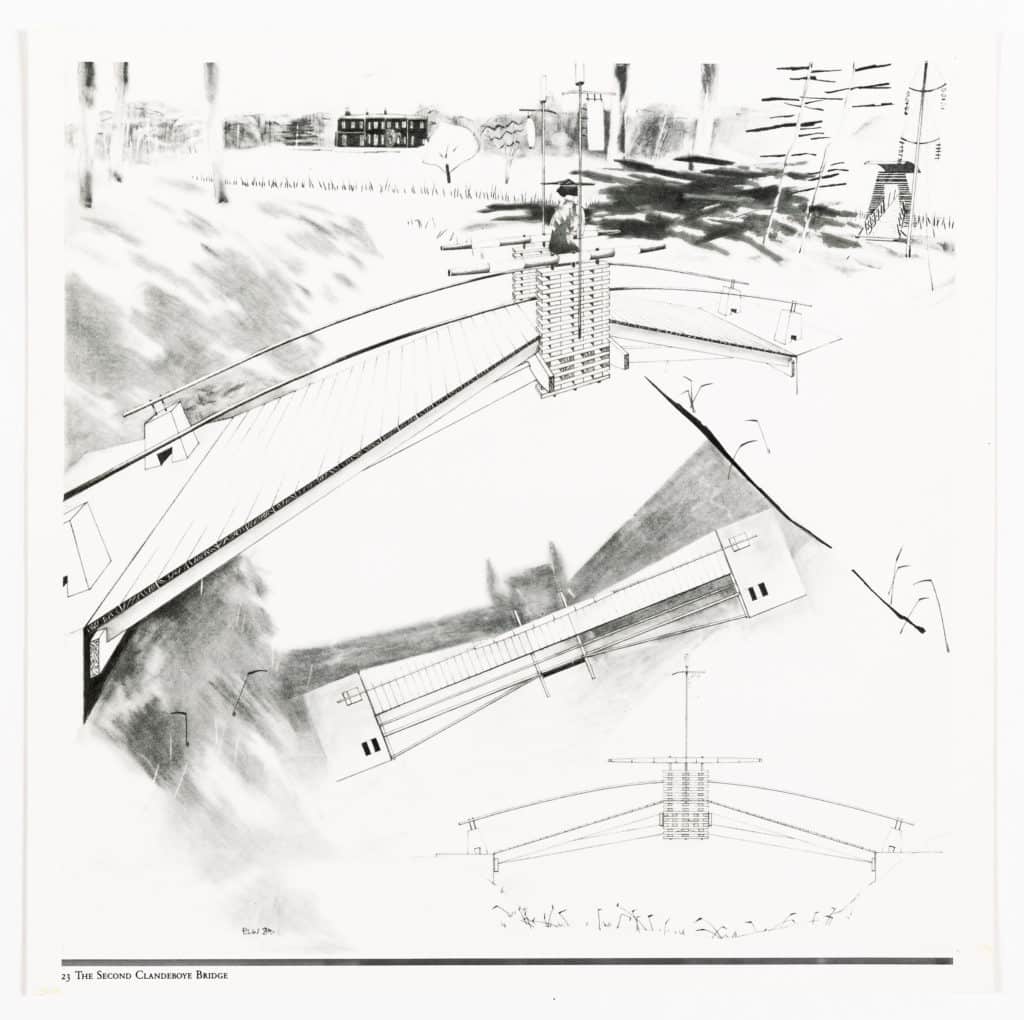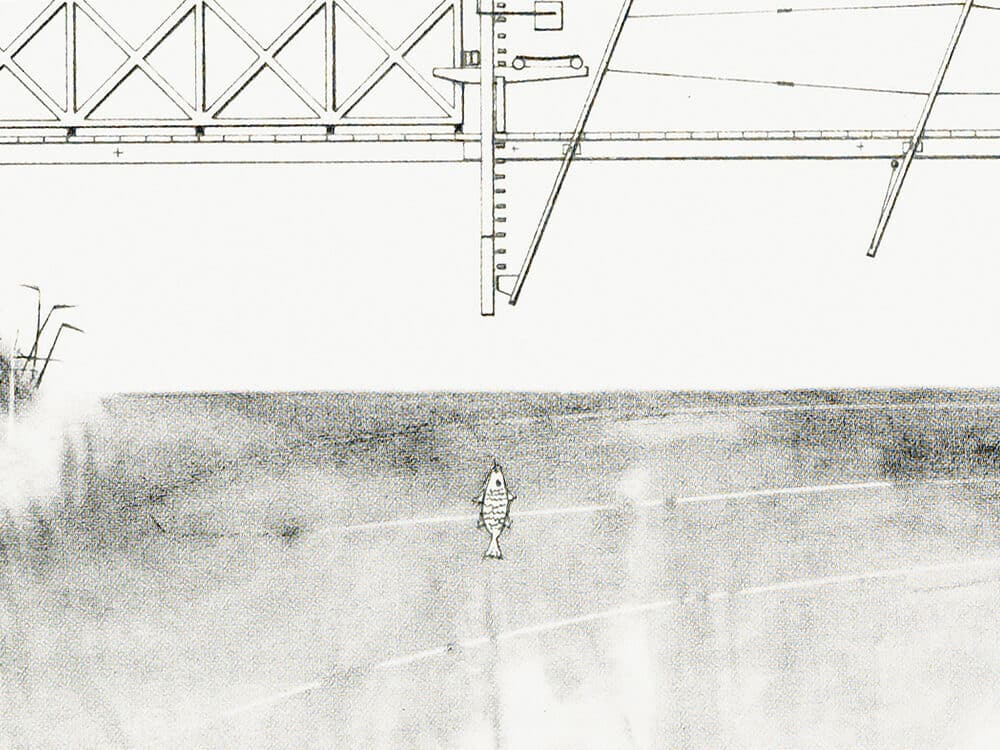The Intention of Suspension: Peter Wilson’s Clandeboye Fish

A phenomenological reading of ‘bridge’ would not prioritise function (crossing) but this suspended moment.
– Peter Wilson [1]
A fish out of water, a lady in thought, floating ‘wilderness’.
Things first have to be separated from each other so as to be united later on. [2]
Peter Wilson’s drawings of the Clandeboye Bridges can each be seen as an active composition choreographed from multiple viewpoints, a set. On first viewing, the compositions seem to provide a composite if not ‘logical’ understanding of the space, the extraction of multiple moments onto the singular page. Yet despite the density of the frame, as the eye moves across and around the page, the gap is foregrounded, it reveals as much as it provides. Each bridge perched tantalisingly so.

The second bridge drawing constructs such an understanding. On the left side the bridge is cut, giving priority within the frame to the structure of its counterpart, the other crossing. The ascent/landing hidden from view. On the right side, an expanse is opened up, yet the ascent/landing is suspended in blank space. The situation unresolved, left reserved for the viewer.
‘The bridge provides the same fixed point for the eye, linking up parts of the landscape’. [3] The page, a landscape, reads as a construct. Each drawing a path to be taken. In the first bridge drawing, a line can be drawn from the vertically hovering fish through the elevation to the component plan to offer a seat, a space suspended within the landscape. No projection lines draw the viewer toward the detail that offers an image of such a moment, at once precarious and anchored within the bank of ferns.
The composition of multiple drawings floating subverts the typical abstraction of the projection, giving purpose to the freedom of the viewer. The fact that moments are never fully justified or that an explanation veers off is indicative of the very nature of drawing itself, the abstraction of the object. No one view is provided or prioritised, a theme is gently present to allow a depth to emerge.
One doesn’t question an axis beginning or terminating with a fish.

Notes
- Peter Wilson, The Clandeboye Drawings, 2017.
- Georg Simmel, Bridge and Door, 1994.
- Ibid.
Gabrielle Eglen is a fifth year student at the Architectural Association School of Architecture.
This text was entered into the 2020 Drawing Matter Writing Prize. Click here to read the winning texts and more writing that was particularly enjoyed by the prize judges.

– Peter Wilson